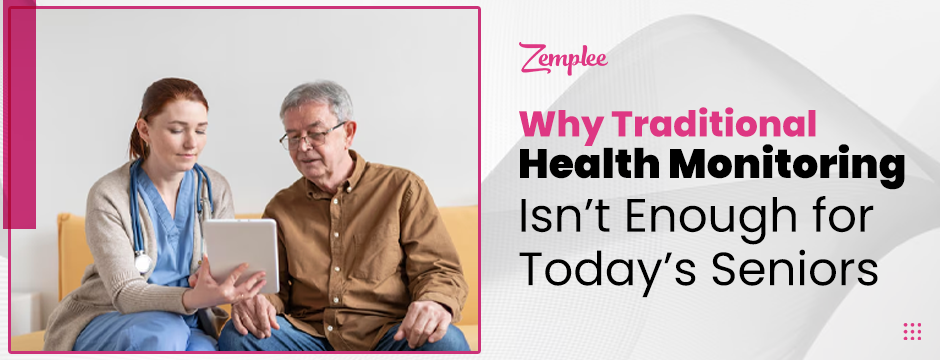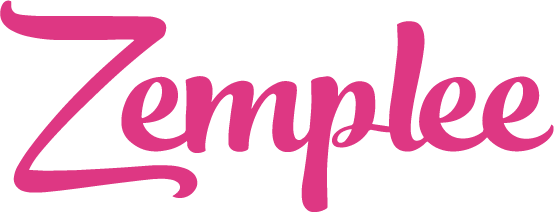As global life expectancy increases and healthcare advances, more people are living longer—but not necessarily healthier. For seniors, maintaining wellness and independence requires more than occasional doctor visits or reactive care. Traditional health monitoring systems, while effective in the past, are increasingly falling short of what modern aging adults need.
Today’s seniors live in a digital world where health risks demand real-time insights, predictive analytics, and comprehensive care solutions. This is where technology steps in. Health monitors for the elderly and elderly health tracking devices have evolved dramatically, offering intelligent solutions that go beyond outdated methods.
In this blog, we’ll explore why traditional health monitoring methods no longer suffice, examine the challenges they pose, and present the smart alternatives that are reshaping elder care in the 21st century.

Traditional Health Monitoring: Where It Falls Short
1. Reactive, Not Preventive
Traditional monitoring often focuses on treating health problems after they occur. Annual check-ups, blood pressure readings during clinic visits, and episodic lab work do little to detect subtle signs of decline. By the time something is discovered, it’s often already progressed.
For example, many elderly patients develop urinary tract infections (UTIs) or pneumonia with no clear early symptoms—but slight changes in sleep or mobility could be warning signs. Unfortunately, traditional methods miss these cues, allowing minor issues to escalate into hospital visits.
2. Limited Data Collection
Doctors rely on snapshots of data—occasional blood pressure readings, glucose levels, or ECG results. While these are helpful, they don’t provide a continuous or dynamic view of a senior’s health.
A one-time reading may not reflect what’s really happening day-to-day. For seniors with chronic conditions, the lack of continuous tracking means patterns go undetected and opportunities for early intervention are missed.
3. Caregiver Blind Spots
Family members and caregivers often operate with limited insight. Unless they live with the senior or visit frequently, they can’t track daily behaviors, routines, or subtle health changes.
Traditional health monitoring doesn’t offer tools for remote observation. This makes it difficult for caregivers to anticipate issues like fall risk, cognitive decline, or inactivity—all of which could be managed better with constant monitoring.
4. No Real-Time Alerts
Emergencies such as falls, strokes, or sudden drops in oxygen levels require immediate attention. Traditional systems don’t alert caregivers in real-time. Unless the senior initiates a call for help (and is able to do so), response times can be dangerously delayed.
In contrast, modern elderly health tracking devices can detect abnormalities instantly and alert caregivers or emergency contacts without delay.
The Changing Needs of Today’s Seniors
The modern senior is more tech-savvy, independent, and informed than previous generations. They want to age in place, maintain autonomy, and avoid unnecessary hospitalizations. But their health needs are also more complex, as many live with multiple chronic conditions like:
- Hypertension
- Diabetes
- Osteoporosis
- Cognitive disorders
- Mobility challenges
As a result, their care demands personalized, continuous support, not generic once-a-month monitoring.
Increasing Fall Risks
Falls are the leading cause of injury among seniors. A single fall can lead to hospitalization, disability, or even death. Traditional monitoring systems do not assess movement patterns or balance changes, making it impossible to detect early signs of instability.
Polypharmacy Concerns
Many seniors take multiple medications daily. Missed doses or incorrect timing can result in dangerous interactions or side effects. Traditional monitoring doesn’t support medication adherence tracking.
Social Isolation
Loneliness is a silent killer. It’s linked to depression, cognitive decline, and even cardiovascular problems. Traditional monitoring methods don’t detect changes in social behavior or emotional health—something modern AI-enabled systems can help address.
The Rise of Intelligent Health Monitors for Elderly
To fill these gaps, a new generation of elderly health tracking devices is emerging—offering smarter, more proactive solutions. These are not just gadgets, but part of a larger movement towards data-driven elder care.
What Makes Them Different?
- Continuous Monitoring – 24/7 data collection on heart rate, sleep, movement, and more.
- Non-Intrusive Sensors – No need for wearable devices; smart sensors embedded in furniture and rooms track patterns passively.
- AI-Driven Insights – Machine learning algorithms analyze daily behavior to flag unusual activity.
- Real-Time Alerts – Caregivers get instant notifications in case of abnormal behavior, fall detection, or medical emergencies.
- Remote Access – Families and providers can monitor health data from anywhere through connected dashboards or apps.
Together, these features make modern health monitors a powerful tool for preventive care, not just emergency response.
Aging in Place Made Possible
One of the most significant impacts of these innovations is the ability to age safely at home. Smart devices enable seniors to stay independent while offering families and care teams the visibility and peace of mind they need.
In fact, modern health monitors for elderly individuals are becoming essential for aging in place strategies. They not only enhance safety but also reduce caregiver stress and healthcare costs.
How Zemplee Is Leading the Way
At Zemplee, we believe elder care should be proactive, respectful, and intelligent. That’s why we created Attentive AI™—our proprietary, privacy-first solution that monitors seniors through discreet, camera-free sensors placed throughout their homes.
We transform movement and behavior into actionable health insights using AI, IoT, and machine learning. Our system tracks:
- Mobility and walking patterns
- Sleep quality and duration
- Bed and chair usage
- Unusual inactivity or prolonged sitting
Families receive real-time updates, and facilities or providers gain the data needed to make informed, timely decisions. We don’t just report emergencies—we predict and prevent them.
By avoiding cameras and microphones, we ensure that monitoring never feels invasive. Seniors keep their dignity and autonomy, while caregivers and families stay connected and informed.
Our goal is simple: Empower seniors to live longer, healthier lives at home.
Conclusion
Traditional health monitoring systems are no longer sufficient for today’s aging population. They miss early signs, fail to provide continuous insights, and often rely on the senior or caregiver to notice something is wrong.
In contrast, modern health monitors for elderly individuals—especially those powered by AI—offer a transformative approach. With elderly health tracking devices, families and caregivers can detect risks early, respond faster, and support seniors in living independently with confidence.
The future of elder care is here—and it’s smart, connected, and compassionate.
Ready to experience the difference?
Let Zemplee show you how we’re redefining aging in place, one home at a time.

